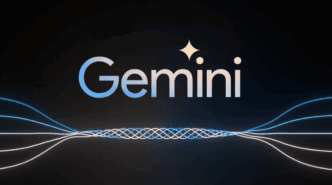AI model pricing looks simple on paper—until you dig into the hidden mechanics of how models process text. One such hidden factor is tokenization—the way AI models break input into smaller chunks, or tokens. It turns out that not all tokenizers are created equal. And this small technical detail can lead to big differences in cost, especially in enterprise settings.
In this analysis, we break down how Anthropic’s Claude models, despite lower advertised input costs, may actually end up costing 20% to 30% more than OpenAI’s GPT models in real-world applications.
Claude vs GPT: The Hidden Token Trap
At first glance, Anthropic’s Claude 3.5 Sonnet looks like a cost-effective option. As of June 2024, it offers 40% cheaper input token pricing compared to OpenAI’s GPT-4o. Both models also charge the same rate for output tokens. But in real-world tests, Claude ends up generating significantly more tokens for the exact same input.
Why? The issue lies in tokenizer inefficiency.
Anthropic’s tokenizer breaks text into more pieces than OpenAI’s tokenizer does. So while each token might be cheaper with Claude, you end up paying for more of them. This inflation quietly eats into any savings and can inflate total costs by 20–30%, depending on your use case.
Token Count Varies by Content Type
This token bloat isn’t consistent across all kinds of content. Structured text—like code or math—gets hit the hardest. Here’s how Claude compares to GPT-4o in different domains:
| Domain | GPT-4o Tokens | Claude Tokens | Overhead |
|---|---|---|---|
| English Articles | 77 | 89 | ~16% |
| Python Code | 60 | 78 | ~30% |
| Math | 114 | 138 | ~21% |
As seen above, Claude’s tokenizer adds significantly more tokens in technical domains. For AI-heavy industries relying on code and data analysis, this creates a hidden cost that can add up quickly.
More Tokens, Less Room: The Context Window Illusion
Claude 3.5 Sonnet boasts a massive 200K token context window, compared to GPT-4o’s 128K. But due to its verbose tokenization, that space fills up faster. In practice, your “effective” window—the usable input length before the model hits its limit—is often smaller than advertised. For teams dealing with long documents or large datasets, this could mean cutting down content or making trade-offs.
Why This Matters for Enterprises
In high-volume enterprise settings, where every prompt and token adds to the bill, these differences are critical. You might pick Claude for its lower input price and still end up with a higher monthly invoice. That’s not just inefficient—it’s misleading.
Add to that the difficulty of estimating Claude’s token counts. While OpenAI offers well-documented and open-source tokenizers, Anthropic’s tokenization process is less transparent. This makes it harder to budget for usage or predict costs ahead of time.
The Technical Breakdown
OpenAI’s GPT models use Byte Pair Encoding (BPE), which efficiently merges common character pairs. Their latest GPT-4o models rely on the o200k_base tokenizer, shared via open tools like tiktoken.
Claude models, on the other hand, use a proprietary tokenizer with only 65,000 token types (compared to OpenAI’s 100,261). This difference in vocabulary may be one reason Claude ends up splitting text more often.
While Anthropic briefly offered a Token Counting API in 2024, it’s no longer available in 2025—adding another layer of complexity to cost planning.
Final Thoughts: Claude vs GPT Enterprise Costs
What looks cheaper may not always be. Claude 3.5 Sonnet’s attractive token pricing can mask a deeper issue: token count inflation. For enterprises working with large-scale inputs—be it customer data, code, or financial models—this means Claude may be 20–30% more expensive in practice, despite the headline rates.
Before you commit to a model, especially in high-scale environments, run your own token tests. Understand how your content gets processed. And always look beyond per-token pricing—effective cost per prompt is what really matters.












